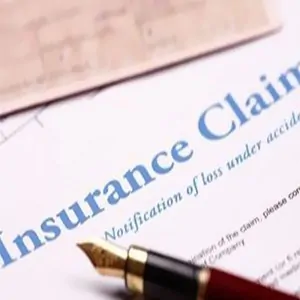12555 Orange Drive
Suite 233
Davie, FL 33330
12555 Orange Drive
Suite 233
Davie, FL 33330

Usually what happens to a car accident claims file within the first 30 days will determine whether the file will be handled properly. Most of the problems in the auto insurance claim industry develop in that first 30 days, due either to poor supervision or poor work-up by the claims adjuster or the claims manager. It doesn’t make much sense to create a claims file and then just let it lay around with no activity on it.
The claims file is created after the claimant, insurance agent, or insured notifies the insurance company of an accident or possible claim. There is no creation until the file is set up in the claims department. What this means is that an actual person must input the claims information into a computer in a form acceptable to the insurance company’s system. It is not until the insurance company accepts the information fed into it’s system that the claim is “created.”
The state of Florida has strict insurance claims handling regulations that require insurance companies to provide specific information to policyholders on receipt of claims and make coverage decisions and pay claims within certain time limits. We call this acting in “good faith.” In other words, if an insurance company is taking too long to pay your claim they may be acting in “bad faith” which creates an independent cause of action against the insurance company based in contract for “bad faith.”
Unless coverage can be verified, there is no duty to defend or indemnify the insured. Coverage is usually first verified by the insured’s agent and again verified in the claims department for the insurance company.
When a coverage question arises in a claim, the insurance company has no obligation to split the claim file into a separate factual investigation and coverage investigation or to assign separate adjusters to handle the coverage and liability/damages aspect of the file.
In the event there is excess or umbrella coverage, there is a duty of primary insurance carriers as part of its coverage to put excess insurers (umbrella insurance) on notice when the policyholder’s liability and damages are likely to exceed the policy limits.
Before it can be determined if excess or umbrella insurance obligations on a claim are triggered, a thorough analysis of liability, damage, and scope and availability of insurance coverage needs to be conducted. Of these three components, the evaluation of liability is the threshold issue that must be thoroughly and completely evaluated before the issue of damages and scope of insurance can be considered. That is because, under the terms of the insurance policies, not a single dollar of coverage is available for settlements or judgments if the policyholder has no liability. Coverage for liability is only triggered by an adjudication of fault for which the policyholder is legally liable. If the policyholder is not legally liable, it does not matter if the plaintiff has $10 million in damages and the primary and umbrella insurer has $30 million in coverage.
Because liability is a threshold issue, it may not and often cannot be determined at the outset of a lawsuit. It may take months if not years of litigation to ascertain if liability of any degree can or cannot be published. An exaggerated emphasis on settlement can result in liability issues being ignored.

Attorney Micah Longo is the founding member
and managing attorney of The Longo Firm. A
Pennsylvania native, Micah Longo...Read More